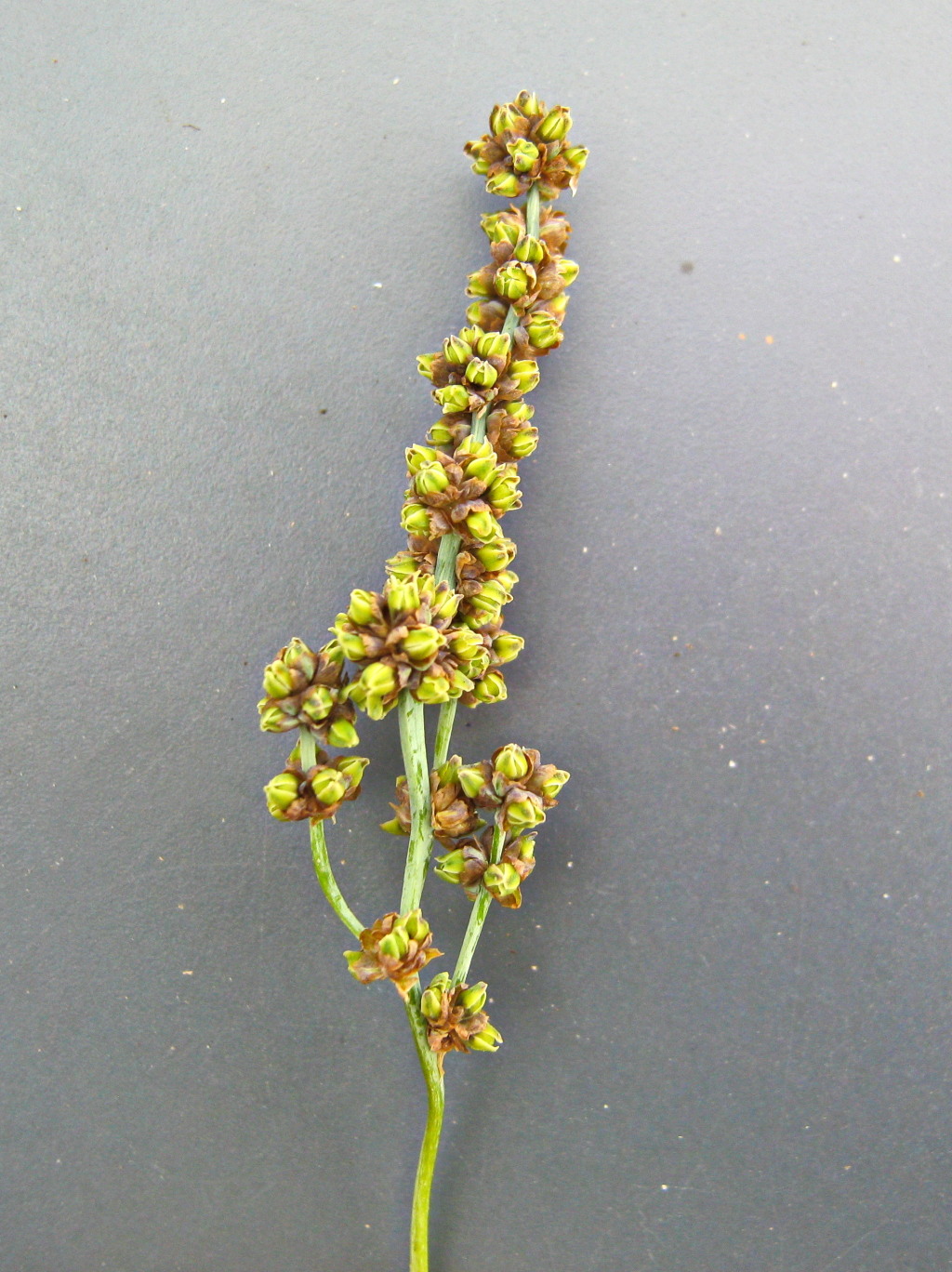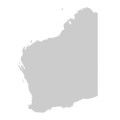Lomandra collina
(R.Br.) EwartTussocks dense or open. Leaves flat or transversely narrow-elliptic in cross-section to subterete, (7–)15–40 cm long, c. 1–1.5 mm wide, often waxy-glaucous; basal sheath gradually tapering distally, soon shredding into very fine, cottony fibres, whitish; apex long-rounded to acuminate. Male inflorescence usually well branched, usually c. one-quarter to half as long as leaves; non-flowering axis usually exposed (by up to c. 5 cm). Female inflorescence a single globular cluster, 0.5–1.2 cm diam., non-flowering axis exposed for 1–3 cm. Bracts at the base of each cluster of flowers obscured by flowers, initially whitish, becoming pale golden-brown. Flowers with outer and inner perianth yellow. Male flowers c. 2 mm long; female flowers c. 3 mm long. Flowers mostly Aug.–Nov.
LoM, MuM, Wim, GleP, Brid, VVP, RobP, DunT. Also WA, SA, NSW. Usually associated with mallee communities on sandy dunes of the north-west. An old collection purportedly from the Nelson area in the far south-west appears to be referable to this species.
See notes under Lomandra glauca.
Conn, B.J. (1994). Xanthorrhoeaceae. In: Walsh, N.G.; Entwisle, T.J., Flora of Victoria Vol. 2, Ferns and Allied Plants, Conifers and Monocotyledons, pp. 720–734. Inkata Press, Melbourne.
 Spinning
Spinning



